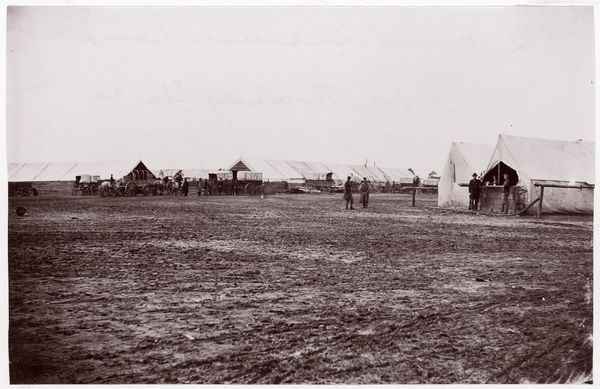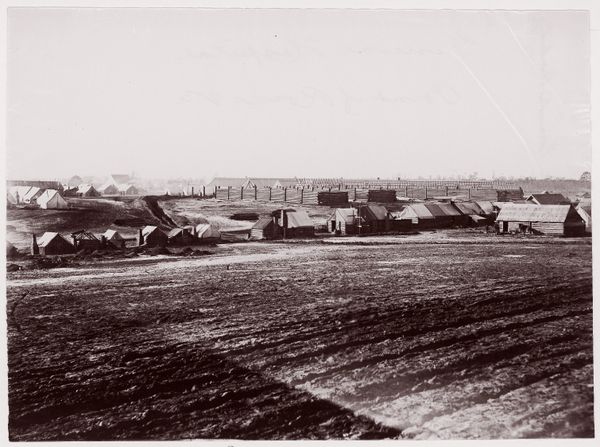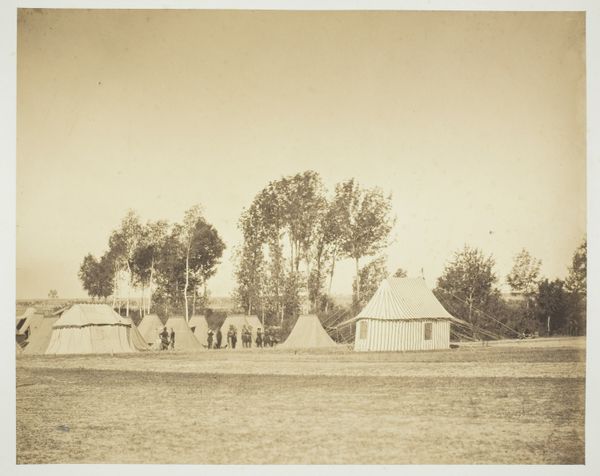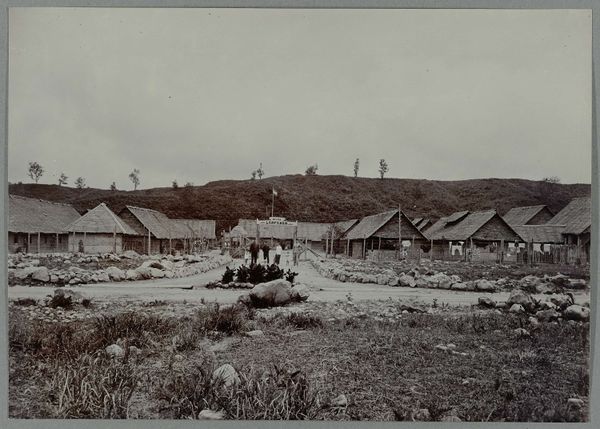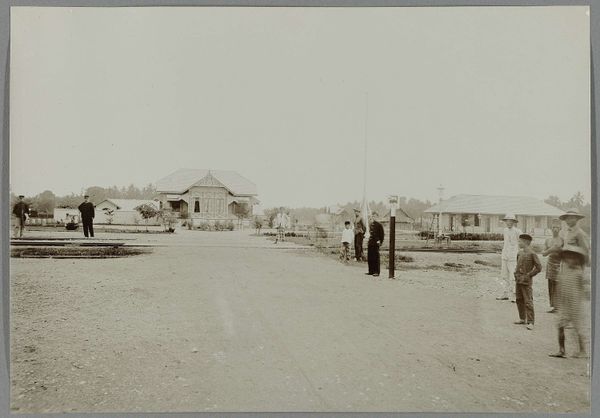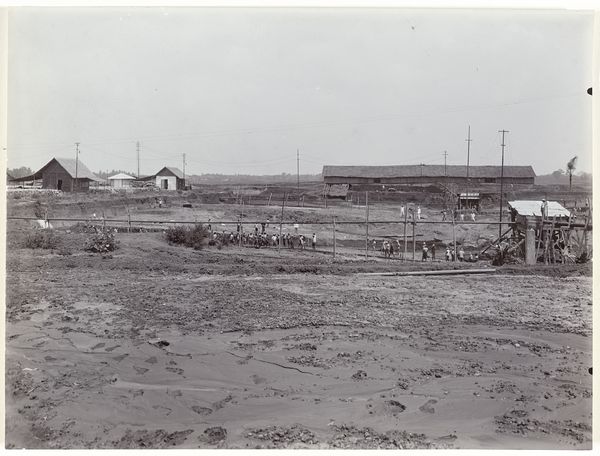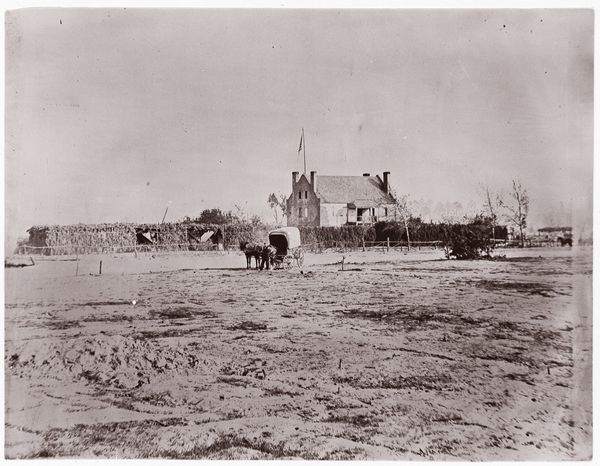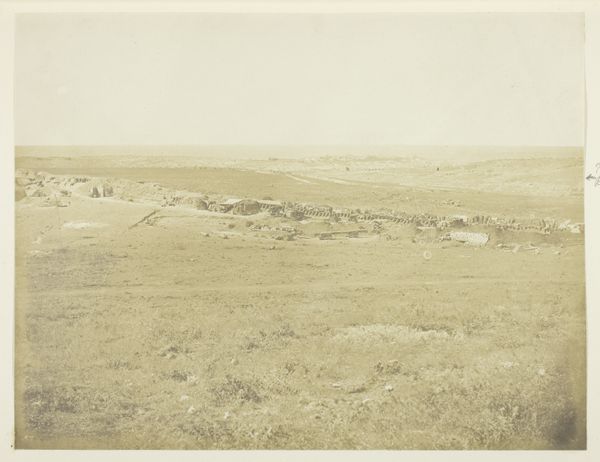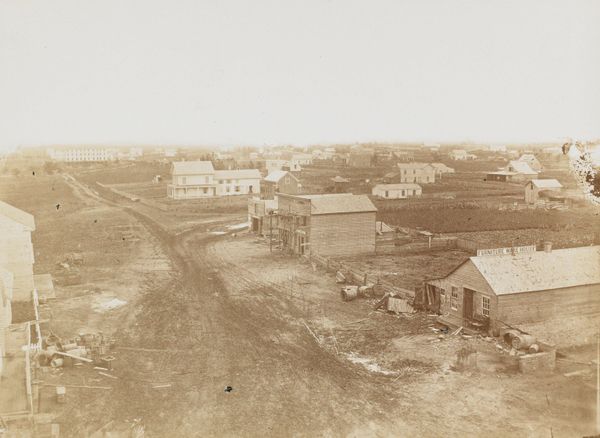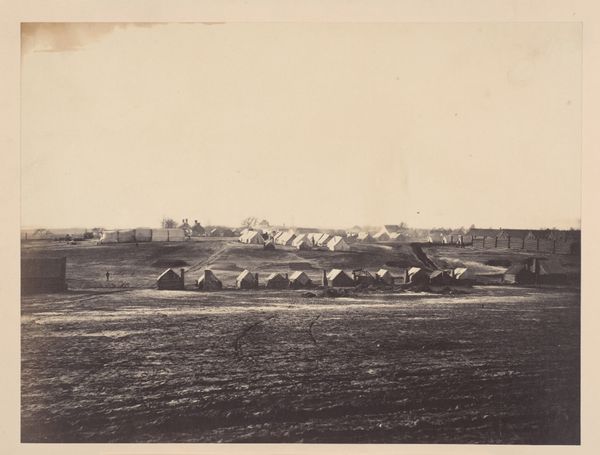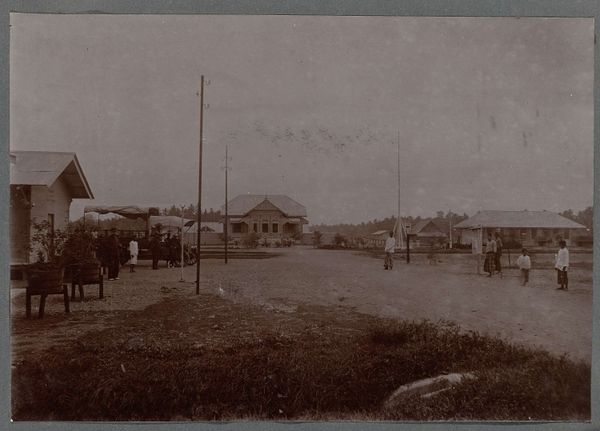
Quartermaster and Ambulance Camp, Brandy Station, Virginia 1861 - 1865
0:00
0:00
photography, gelatin-silver-print
#
portrait
#
war
#
landscape
#
photography
#
soldier
#
gelatin-silver-print
#
monochrome photography
#
history-painting
#
monochrome
Copyright: Public Domain
Curator: Looking at Timothy O’Sullivan’s “Quartermaster and Ambulance Camp, Brandy Station, Virginia,” a gelatin-silver print dating between 1861 and 1865, it’s a stark reminder of the American Civil War era. Editor: It certainly evokes a mood of weary practicality. The composition feels almost desolate, that wide field stretching toward these utilitarian structures... not much in the way of hope. Curator: Absolutely. O’Sullivan was known for his unflinching portrayals of the war's landscapes, focusing on the environmental and infrastructural impact. This piece places the structures and individuals within the wider theater of war and national tension. I think you're drawn to the symbol of a nation split down the middle, now. Editor: That visual shorthand does resonate strongly, though my reading runs beyond simply representing North and South in conflict. White canopies pitched against darkened huts speaks also of fragility against brute force...an unsettling vulnerability. Curator: Interesting. I see more the way those spaces, both canopies and the dark shelters, function in reinforcing gendered divides inherent within conflicts. Military infrastructure supporting all-male battlefronts that reinforce not only ideas around gendered bravery and strength, but race too, don't you think? The implications are staggering. Editor: Of course. Consider also the image’s muted color scheme, almost complete lack of chroma save those shades of black, grey and white, surely this references to older notions about mourning dating all the way back to Roman Toga Pullas and ancient habits of war commemoration? Curator: You are pointing towards the relationship between conflict and traditional funerary ritual? Editor: Precisely. And in those relationships the seeds of meaning. What symbols remain relevant even while cultures destroy and reshape themselves anew? I look at an image like this for a reminder of our history...both destructive and triumphant. Curator: It strikes me as essential for any engagement with this photograph to recognize how photographic technology contributed both to shaping the very idea of historical documentation *and* actively propagated various deeply entrenched socio-political inequalities during this period of unprecedented civil unrest. It shows so much, while obscuring even more, don’t you agree? Editor: Indeed. The layers upon layers speak volumes—and invite us to consider our own role as interpreters of history. Thank you for illuminating this image for us!
Comments
No comments
Be the first to comment and join the conversation on the ultimate creative platform.
